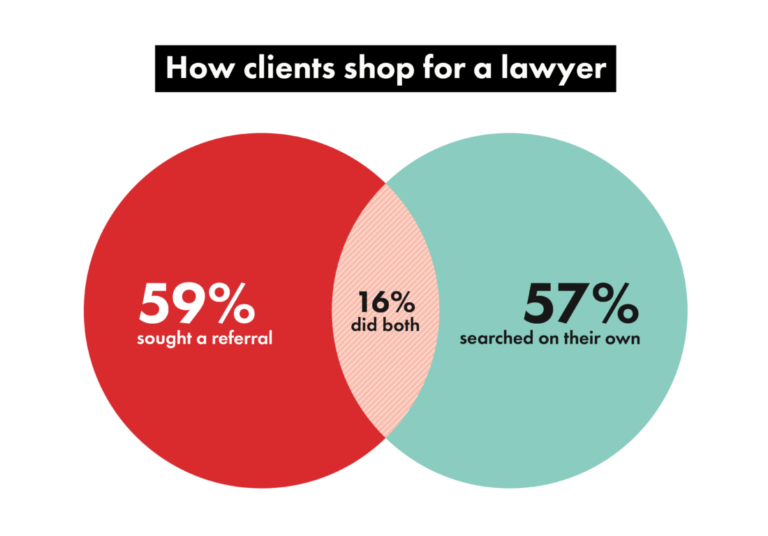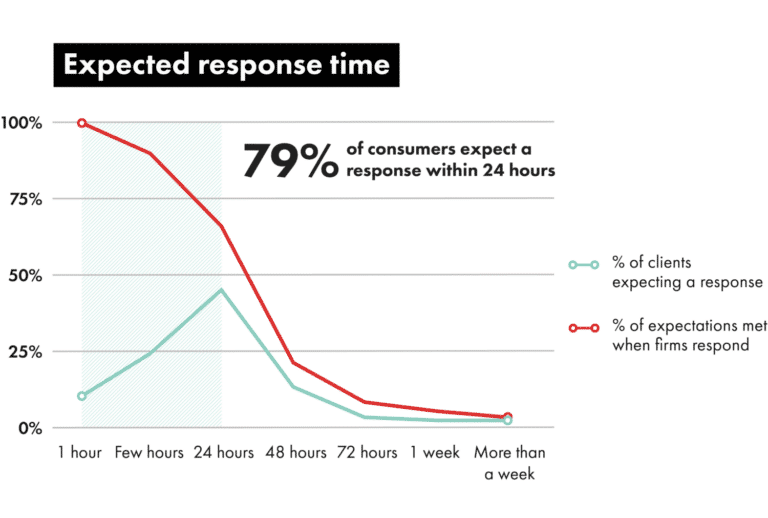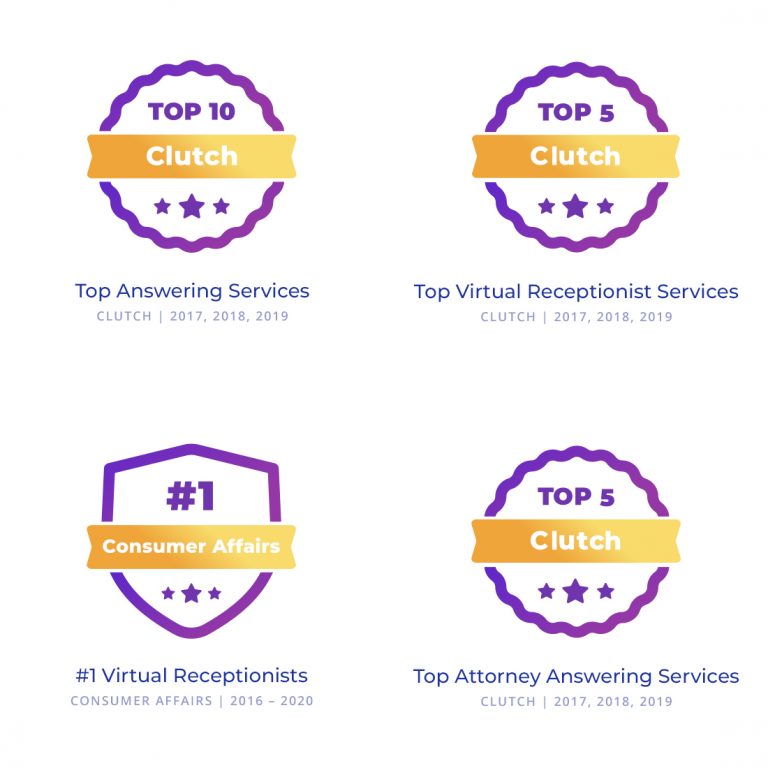Since 2016, Clio’s Legal Trends Report has uncovered revolutionary insights into the business of legal practice for today’s modern society. Its aim is to cover new approaches to understanding some of the most pressing issues that lawyers and clients face today. In this year’s report we find out what really drives a law firm’s success, exactly what clients are looking for when hiring a lawyer, and (after putting hundreds of law firms to the test) a better understanding as to how firms can grow their business.
Closing the Gap
In this article, we’ll uncover the mysteries of the growth gap and how we can close it. Legal practices of all kinds are experiencing this void in their business. But, what makes a firm grow? How can we close the gap?
It was discovered that thriving firms achieve high growth over a sustained period due to two critical factors. One, a focus on client experience and two, firm efficiency. Firms that progress along this client-experience axis with these two factors in mind are the firms that become the most responsive to client needs. These are the firms that know how to attract new business and earn strong satisfaction among their clientele. These are the firms that consistently increase the amount of business they bring in while capturing the full value from all the client-facing, billable work they perform.
By comparing growing, stable, and shrinking firms over a five-year period Clio’s Legal Trends Report was able to show how key performance metrics impact the success of a firm’s growth. So, let’s review those metrics and get a better understanding of what growth in a firm really looks like.
Law Firm Growth Looks Like This
To understand how the Legal Trends Report procured the data for this analysis you must first be made aware of the three key groups and the focus that it was built on. These groups are growing firms (at least 20% over 5 yrs), stable firms (more than 20% over 5 yrs), and shrinking firms (at least 20% over 5 yrs). The focus here was revenue since revenue is often a focus for businesses when analyzing growth. And, in the legal industry over 71% of lawyers rank revenue as the indicator of growth.
Growing firms grew 20% – 30% year over year, averaging a 112% growth between 2013 – 2017. Shrinking firms decreased by 54%, taking less than half the revenue in 2017 (as opposed to 2013). It turned out to be the utilization rates that made the key driving force for revenue growth among growing firms. For those of you that aren’t familiar with this metric, utilization rates measure how many hours a lawyer puts toward billable work on a given day. There was a time when stable firms had the highest utilization rate. But, now the growing firms have increased their rate by 33%, surpassing stable firms.
Boosting productivity for each lawyer is as important (if not more) as hiring more lawyers to handle the work. This brings to mind the old saying “it takes a village”. Lawyers need to put their time into billable hours in order to turn a greater profit for their firms. To do this they need the help of other people. Helpers that can cover the clerical work and provide a high-quality customer experience. Otherwise, the daily tasks of answering and returning phone calls, emails, and other communication platforms can easily distract lawyers from their main focus for the firm’s profit margins, billable hours. 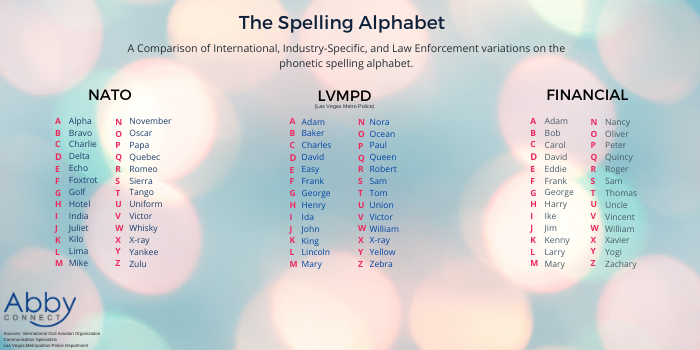
Now, you could imagine that a lawyer could claim about eight hours of billable work each shift. After all, the average hours worked by most individuals in a daily shift is eight hours. But, there are far too many factors that interrupt lawyers from their billable workload. According to the Legal Trends Report, lawyers on average only claim about 2.4 hours of billable time in a traditional eight-hour workday. That’s only 31% of an entire workday that lawyers bill for. To have a better understanding as to how this 31% average was discovered, we’d need to consider the metrics of realization and collection.
Realization measures the amount that a firm invoice compared to the amount of billable work performed. Collection measures the amount that a firm collects compared to the amount invoiced. These are critical metrics for they assess how much value a firm brings in based on the amount of work performed. When realization and collection are high a firm is getting the full value of the work performed.
So, how can lawyers increase this average of 31%? A good place to start looking for this answer is in the current firms that are in fact growing. It’s the growing firms that have the highest earning potential. And, real growth is a result of two factors here. One of these factors is generating more business and the other is strong business metrics.
Let’s review our first factor, generating more business, by first understanding the various platforms that a business can market from and just how effective they are for legal practices.
It Takes More Than Referrals
In this year’s Legal Trend report we learn that referrals are the old fashioned way for getting hired by new clients. Today’s younger generations prioritize electronic methods over referrals. Firms looking to attract younger clients, who likely have more potential for repeat business and long-term referrals, should consider focusing on digital channels where brand and image are important.
Millennials are more likely to care about a lawyer’s website, brand, image, and the firm’s online reviews. They’re far less likely to value referrals from lawyers. Law firms that want to maximize their opportunity for new business should look at marketing their firm across as many channels as possible. But, especially through online search engines and with their own website.
Client’s Shop Around
There is a good chance that clients will reach out to more than one lawyer. The Legal Trends Report found that 42% of consumers surveyed that if they like the first lawyer they speak with they won’t feel the need to speak with another. And, 64% feel the friendliness and likability of a lawyer’s tone make or breaks their decision to hire them. So, it would go without saying that when searching for a new lawyer, first impressions really do count.
Given that clients are likely to reach out to more than one firm when experiencing a legal problem, being the first to respond will help make a better impression. Law firms should always respond within 24 hours. Any more of a wait and clients move onto the next option. And, clients want that first response to be genuine. So, what does this tell us about the different communication platforms? It tells us that phones are the most important channel of communication for law firms!
When first reaching out to a law firm, 68% on consumer surveyed said they reached out over the phone. In a world of digital communications, it is only the phone that allows the communicators to portray real human emotion. A true human experience. Firms that do a poor job of responding to client inquiries or that don’t provide the type of information that clients are looking for over the phones are less likely to get hired. A firm must prioritize responsiveness with potential clients to make good impressions and set a standard for the care they will provide.
The Legal Trends team decided it was time to put this to the test and called five hundred firms, picked at random, to see how they would handle their phones. Let’s have a look at those test results.
New Client Call Handling Put to the Test
After Clio’s team put five hundred law firms to the test we learned the majority of law firms do a poor job of handling their incoming calls. Only 56% of law firms answered the original incoming call. Interestingly enough, most lawyers claim that they prefer to respond over the phone as opposed to email. But, out of the 39% of calls made that went to voicemail, 57% didn’t return the call within 72 hours. When the firms did respond it was discovered that the majority didn’t provide enough information over the phones. And, clients today want as much information as you can give them.
When it comes to bringing in new clients, firms that exceed this fairly reasonable expectation are the ones more likely to get hired. Law firms that are too busy to respond or to take the time to deliver quality communications over the phone may also be suffering from a lack of efficient processes that allow for this type of focus. These types of service experiences will undoubtedly hold back firms from achieving high-growth success. This deficiency presents a major opportunity for law firms to innovate and differentiate themselves within their markets. For example, using a live reception service like Abby Connect can prevent a huge loss in profits for any firm. Having someone you can rely on to answer and provide information to a caller can be the defining factor for your business’ growth.
It turns out that a vast majority of law firms have refocused their attention on growth. But, just how prepared are they to close the growth gap in their business?
How Prepared are Lawyers in Driving Growth?
This year’s Legal Trends Report claims that 87% of lawyers want their firms to grow within the next three years. And, 67% say they want it to grow more than just a little. But, this industry faces a serious dilemma. And, that dilemma is being overworked.
Over 76% of lawyers already say they are overworked in the industry. And, it’s understandable. A lawyer’s responsibilities to their clients and role in the justice system are endless. With already so much on their plates, how can lawyers grow their business?
One component these exhausted lawyers should consider is the understanding of delivering quality client experiences and the right resources that will help provide them. The other is organizing everything in the firm to be productive and making sure everything gets done in an efficient manner. Both are essential for growth, as well as the firm’s sanity.
However, many managing lawyers don’t feel prepared to handle the business side of the firm, In fact, only 53% are confident in running the business side of things. It’s important to remember that those who are confident in running their firm are more engaged in their business. With more engagement from management the business can’t help but thrive. In order to grow the business, lawyers have to take advantage of multiple resources and outlets of service in order to accomplish this.
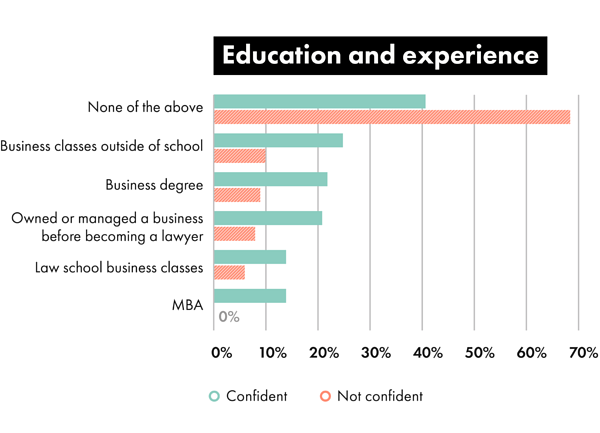 Let’s take a final look at what we’ve learned from this year’s report by breaking down the lawyer’s funnel.
Let’s take a final look at what we’ve learned from this year’s report by breaking down the lawyer’s funnel.
It All Adds Up to This
To better understand the lawyer’s funnel, the Legal Trends Report provides us with an example using the industry’s average hourly rate, average billable time, and the metrics of realization and collection. All while keeping in mind that main focus, revenue.
Legal Trends example explains that the average lawyer worked about 2.5 hours of billable work each day in 2018. Based on this year’s average industry rate of $253 hourly, a lawyer can expect to bring in roughly $2,024 of revenue for the firm if they billed an average 8-hour workday. However, the average lawyer only puts 31% of a traditional 8 hour day toward billable work. This reduces the maximum potential daily earnings to $627. Now, let’s not forget about those two key metrics, realization and collection. When you apply an 81% realization rate, the average daily earnings shrink to $508. And, finally, when factoring in an 85% collection rate, the average effective daily earning falls to $432.
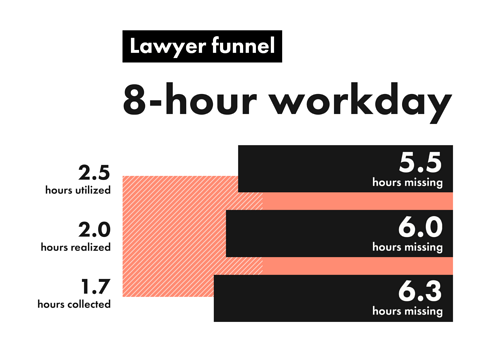 So, what does this really all add up to? Two simple factors, really. A focus on client experience and firm efficiency. It’s time for lawyers to put themselves in the shoes of their clients and experience what they experience. By the way, it’s not really a great experience. It’s time to take those extra steps to make your firm stand out from the rest. Make your business relatable to those you’re trying to service. By using live reception resources like those provided by Abby Connect, lawyers can begin the intake process faster and put more time towards billable hours. All without losing consistent professional quality in their communications. And, as we’ve learned in this year’s Legal Trends Report, the phones are the most important way for lawyers to communicate to clients these days. Every connection matters! And, Abby Connect is here to help you make those connections. Call us today at 877-303-5757 and ask about our FREE 14-day trial!
So, what does this really all add up to? Two simple factors, really. A focus on client experience and firm efficiency. It’s time for lawyers to put themselves in the shoes of their clients and experience what they experience. By the way, it’s not really a great experience. It’s time to take those extra steps to make your firm stand out from the rest. Make your business relatable to those you’re trying to service. By using live reception resources like those provided by Abby Connect, lawyers can begin the intake process faster and put more time towards billable hours. All without losing consistent professional quality in their communications. And, as we’ve learned in this year’s Legal Trends Report, the phones are the most important way for lawyers to communicate to clients these days. Every connection matters! And, Abby Connect is here to help you make those connections. Call us today at 877-303-5757 and ask about our FREE 14-day trial!
*All data related images within this article and data is specifically sourced from Clio’s 2019 Legal Trends Report.
